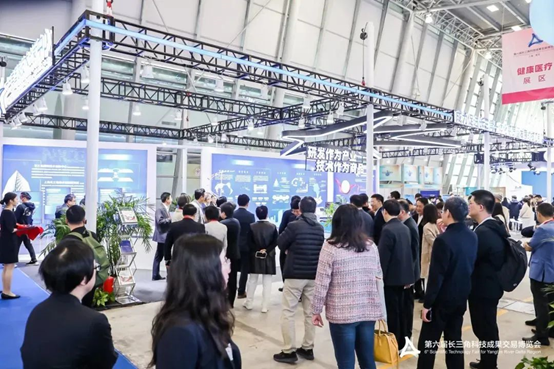On November 15, the 6th Scientific Technology Fair for Yangtze River Delta Region commenced in Jiading District, Shanghai. Adopting the theme "Innovative Linkages, Openness for Mutual Success", the fair focused on the transformation of scientific and technological achievements to promote high-quality technological innovation within the Yangtze River Delta region.
During the exhibition, National Innovation Center Par Excellence (NICE) coordinated the participation of various R&D entities and industrialization technology project companies within its system. NeuHelium was invited to attend the event.

The fair showcased the substantial technological innovation achievements and the successful application of these advancements in the industrial sector. This was made possible by NICE’s organizing and promoting the deep integration of regional scientific and technological innovation with industry. The fair also highlighted the progress made in establishing a technological innovation system and an innovation ecosystem that supports the high-quality development of the regional industry.
A total of 29 market-oriented and innovative scientific and technological achievements were exhibited across various fields, including manufacturing and equipment, advanced materials, and new-generation information technology. These breakthroughs in key technologies signify the development direction of Shanghai's and the Yangtze River Delta's key industries and sectors.

NeuHelium’s demo: semiotics computing
Semiotics computing combines in-memory computing and adaptive memory computing technologies to overcome the limitations of traditional computing architectures. In-memory computing addresses the memory and power walls, efficiently accelerating mainstream AI object recognition algorithms. Adaptive memory computing technology allows for unsupervised, dataset-free learning, enabling the computer to adaptively learn in dynamically changing scenarios. This innovative approach enables self-organized classification of dynamic situational behaviors, enhancing the computer's ability to analyze and understand complex environments.
In the realm of sensor processing, the semantic computer also employs a brain-inspired attention-focusing mechanism, enabling it to focus on and track target objects in high noise conditions, much like humans can focus on a specific object in a crowded room. This mechanism utilizes compressed sensing and zero-shot online learning algorithms, allowing dynamic visual sensors to adapt to the current environment without prior training. As a result, only essential moving object information is transmitted, enabling recognition in high-noise environments while substantially reducing power consumption and increasing accuracy.





 沪公网安备 31011002003093号
沪公网安备 31011002003093号